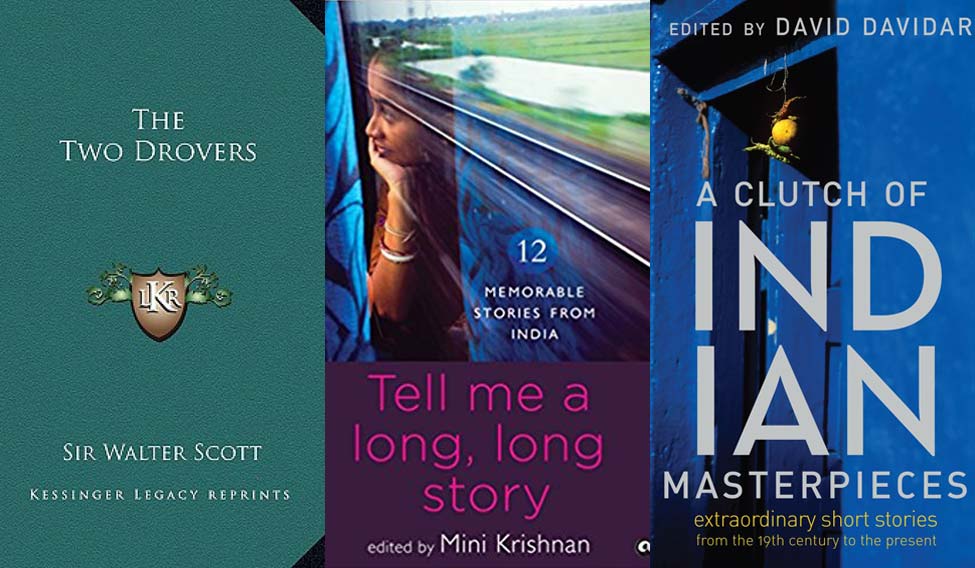There must be something extraordinary about short stories that they continue to attract vast readership globally. Some argue that the very purpose of their existence is to allow a piece of fiction -- a complete story in itself — to be read in one sitting. Thus they prove to be a solution for those who are "too busy" to read a full-length novel or need help in keeping themselves occupied during a journey.
While short narratives and tales have existed for centuries in one form or the other, Walter Scott's The Two Drovers, published in Chronicles of the Canongate in 1827, is said to be the first modern short story. But the mid-19th century was the period that saw the dominance of the novel and most known French, Russian and American writers stuck to the trend. It was only in the late 1880s that Robert Louis Stevenson popularised the genre and the short story began to flourish as an art in England. Almost during the same time, Rudyard Kipling was popularising the genre among English readers in India.
But then Anton Chekhov (1860-1904), arguably the greatest short story writer ever, had not even arrived in the literary space. Chekhov, in his mature stories of the 1890s, revolutionised the short story by transforming the narrative. His many themes depicted that life is godless, random and absurd, that all history is the history of unintended consequences. It was such relatable themes in his short stories that could be read in a short span of time that contributed significantly to the rise of their popularity among readers. Most such short stories were published in magazines and newspapers.
By 1950s, newspapers and magazines in India too had dedicated columns for short stories and writers were highly sought after in literary circles. One such early writer who made a living by publishing short stories in Indian newspapers and magazines was Ruskin Bond, a well-known face today.
"Those were simpler times when fashion and glamour had not sidelined literature from our newspapers. After my return from England, I spent many years just writing short stories and sending them to The Statesman and The Illustrated Weekly. That was my livelihood then. But I will also say that many of those early stories have gone on to be included in many anthologies that came after international publications arrived in India," Bond, easily one of India's most loved writers today, had told this correspondent in an earlier interview.
But Bond was neither the first nor the only one. Noted Indian publisher David Davidar brought out A Clutch of Indian Masterpieces in December 2014. The collection, which reproduced some of the finest Indian short stories, also serves as a great tool in understanding the journey of the genre.
Davidar asserts that the first "recognisably modern Indian short stories" were written in Bengal (by Rabindranath Tagore and others) in the second half of the 19th century and writers from other regions were quick to follow suit, often using the form to protest against colonial oppression and the various ills afflicting rural and urban India. Over the next century-and-a-half, some of the finest writers the world has seen produced outstanding fiction in every conceivable genre — including short stories.
As it happened, by the late 1980s, major international publishing houses were able to see the potential of the market for books in India and began setting up their branches here. Penguin India came in 1985 — and the publishing space would change forever. It started publishing in 1987 with only six books. Five years later, in 1992, HarperCollins arrived and other major publishing houses followed. Even though Rupa was founded way back in 1936, its publishing gained a lot more momentum after their arrival. So did the rise of other home-grown publishers.
There was no looking back for the short story in India ever since. From fresh stories to translated editions from Indian languages, anthologies and collections of short stories have been hitting the stands with regularity.
Tell me a long, long story (Aleph/Rs 699/316 pages) by Mini Krishnan and The Heroine and Other Stories (Niyogi Books/ Rs 295/157 pages) by D. Jayakanthan are two new collections that give you a taste of modern Indian short story. While the former is a collection of 12 memorable long short stories (a literary form in itself) from India, the latter depicts the life of common people in Tamil Nadu in the middle of the 20th century.
Such collections are customary today, but looking back at the humble beginnings of the genre, it seems that it has indeed come a long, long way.
— IANS






